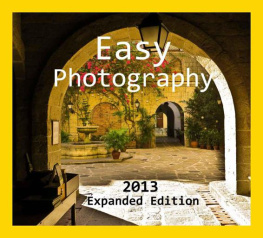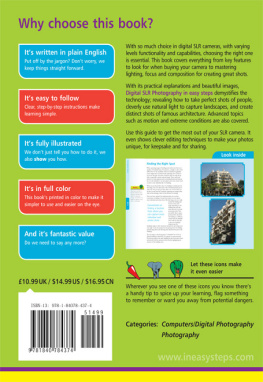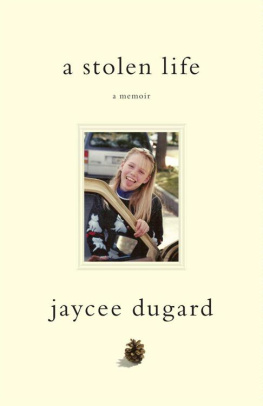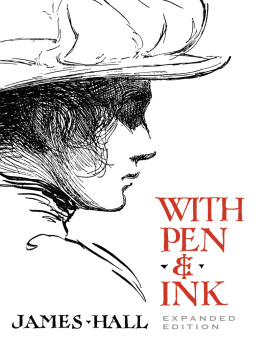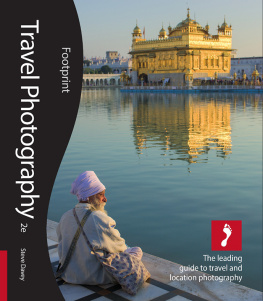Garrido - Easy Photography (2013 Expanded Edition)
Here you can read online Garrido - Easy Photography (2013 Expanded Edition) full text of the book (entire story) in english for free. Download pdf and epub, get meaning, cover and reviews about this ebook. year: 2011, publisher: Gondola Books, genre: Art. Description of the work, (preface) as well as reviews are available. Best literature library LitArk.com created for fans of good reading and offers a wide selection of genres:
Romance novel
Science fiction
Adventure
Detective
Science
History
Home and family
Prose
Art
Politics
Computer
Non-fiction
Religion
Business
Children
Humor
Choose a favorite category and find really read worthwhile books. Enjoy immersion in the world of imagination, feel the emotions of the characters or learn something new for yourself, make an fascinating discovery.
Easy Photography (2013 Expanded Edition): summary, description and annotation
We offer to read an annotation, description, summary or preface (depends on what the author of the book "Easy Photography (2013 Expanded Edition)" wrote himself). If you haven't found the necessary information about the book — write in the comments, we will try to find it.
Garrido: author's other books
Who wrote Easy Photography (2013 Expanded Edition)? Find out the surname, the name of the author of the book and a list of all author's works by series.
Easy Photography (2013 Expanded Edition) — read online for free the complete book (whole text) full work
Below is the text of the book, divided by pages. System saving the place of the last page read, allows you to conveniently read the book "Easy Photography (2013 Expanded Edition)" online for free, without having to search again every time where you left off. Put a bookmark, and you can go to the page where you finished reading at any time.
Font size:
Interval:
Bookmark:

Version 06.26.13
CONTENTS
;
INTRODUCTION
P hotography doesnt have to be complicated. Try a minimalist approach to DSLR photography that encourages you to take full advantage of a cameras automatic functions leaving only minor tweaking to do to bring out that perfect exposure.
Trust your camera. If the eye is the wonder of evolution, having sprung into being a perfect organ, the camera is technologys version of it. Most of the time, it will get the settings right. It is the minor adjustments to compensate for a subtle change in lighting conditions, or to adjust for movement, or to allow artistic composition, among others, that require human intervention.
Cut through the fog of counter-intuitive concepts such as aperture values. For example, how do you wrap your brain around aperture values such as f/4 or f/10? The higher the aperture value, the smaller the lens opening and the lower the aperture value, the bigger the lens opening? Confusing.


The first picture above was shot with a high aperture value of f/10 in order to narrow the lens opening and limit the light entering the lens and capture the layers of clouds from the glare; the second picture was shot with a low aperture value of f/4 to widen the lens opening and capture more light from darkening skies as opposed to a higher value of f/10, but does it mean anything?
On the other hand, if I told you to think of these values as fractions, reading f/4 as 1/4 and f/10 as 1/10 wouldnt you be able to understand the values better? Obviously, 1/4 slice of a pizza is bigger than 1/10. Therefore, f/4 is a bigger aperture than f/10. The figures in fractions do not mathematically translate into exact values in optical terms, but then again the point is to unscramble your brains; you wont see the difference in your pictures. The product of the minimalist approach is a photograph just as good as the one taken by a pro with less effort, after giving free rein to your creativity.
Now you get it. Lets go down to the basics. The lessons you will learn from this book will apply just as well to any other kind of camera, including the point-and-shoot.
UNDERSTANDING EXPOSURE
I f all you ever want to do with your camera is press the , then there is no use educating yourself about the basics. You will be an amateur forevermore. To be able to use the camera in creative ways, and shoot amazing pictures, learn the basics first. And then you can use the Idiots buttons.
Learning exposure is as exciting as discovering fire for the first time. We amateurs are primitive only in the sense that the professionals have mastered the secret of making fire and ran away with it from the Neanderthals. When they deign to teach the skill to their lesser cousins, they do so behind a code of technical jargon instead of telling them to rub two pieces of flint together. Photography is a skill that should be shared with all mankind.
The prime values
You need to master only three concepts in photography to be able to shoot like a pro. Yes, three. Aperture, shutter speed, ISO. A good photograph is the sum of the right blend of these three values. The Holy Trinity in photography, these prime values are always in a flux as lighting conditions change, and the challenge is to find a balance among them to make the camera see your way, finding the right mix of light and shadow.

Exposure means balancing aperture, shutter speed and ISO.
The challenge above was to balance the shutter speed and ISO in order to capture the most details of the bird that would otherwise be blurred by the speed of the subject.
Aperture
Aperture literally means hole or opening. It is the hole in the lens barrel through which light passes. It is the eye of the camera that regulates the amount of light entering the lens. Adjustable in size by dilating and shrinking its diameter, it is in the form of a rose-shaped bud of overlapping petals that crowd together to close and widen to open. Frozen in position, it is more akin to the blades of a turbine.
In the earliest days of photography, when the camera was the size of a room (camera means room in Latin), the aperture was literally a hole on the wall through which light entered and passed through a prism that broke it into its various colors.
The rule is the smaller the aperture the sharper the image. This is especially true in landscapes, with a smaller aperture enabling you to sharpen objects from the near to the far. In this way, the camera is said to squint.
Shutter speed
The shutter is the eyelid of the camera that blocks the light at high speed. It is the guillotine that cuts the light in a snap. It is the curtain on the window. Too little light makes a dark or underexposed image. Too much makes a pale or overexposed image.
Generally, the faster the shutter speed the sharper the picture. This is because the sensor captures less movement. At 1/500 of a second, a leaping deer might have moved only an inch. At 1/1000, it is completely suspended in the air.
Conversely, the slower the shutter speed, the more blur.

Fast shutter for fast action: 1/500 sec.
ISO
The ISO value measures the sensitivity of the camera sensor to brightness. Normally an ISO of 100 is the least sensitive, while 6000 (even 24,000 for really expensive cameras) is the most sensitive. You dont use a low ISO value indoors or at night, because the camera will see only darkness. In other words, the picture will be underexposed and it will come out black. Conversely, you dont use a high ISO value at high noon, because the high sensitivity to light means you are essentially burning your eyeballs. Try staring at the sun without a smoked lens. The picture will be overexposed and it will come out white as a sheet. At worst, the light will burn the electronics inside your camera because turning your camera at the sun might focus all the rays inwards, like using a hand-held lens to burn paper. That is why your manual contains a warning not to focus the camera directly at sunlight.
F value
As stated in the introduction, the F value, or accurately written in small cap f, measures the size of the . Remember the aperture is the opening in the lens tube that admits the light. The f value is written like a fraction, with f/22 being near the smallest end of the scale, small as a peephole, and f/4 being at the opposite larger end. When capturing images indoors, choose the aperture value at the larger end of the scale, e.g., f/4, for better lighting.

Big aperture for close-up shot: f/2.8
If you imagine f-value as a fraction, you dont need to commit to memory the head-spinning rule that the higher the f value, the smaller the aperture, the lower the f value, the bigger the aperture. Think f/4 as 1/4, which is larger than 1/8, which is larger than 1/22.
Awareness of the significance of f-value is important because it is the enemy of shutter speed.
Next pageFont size:
Interval:
Bookmark:
Similar books «Easy Photography (2013 Expanded Edition)»
Look at similar books to Easy Photography (2013 Expanded Edition). We have selected literature similar in name and meaning in the hope of providing readers with more options to find new, interesting, not yet read works.
Discussion, reviews of the book Easy Photography (2013 Expanded Edition) and just readers' own opinions. Leave your comments, write what you think about the work, its meaning or the main characters. Specify what exactly you liked and what you didn't like, and why you think so.

